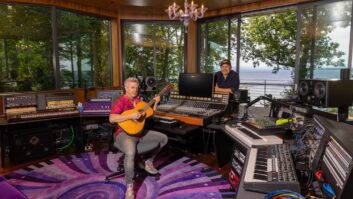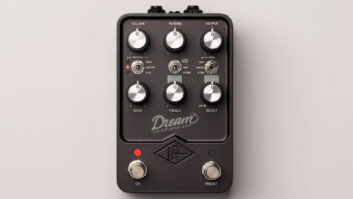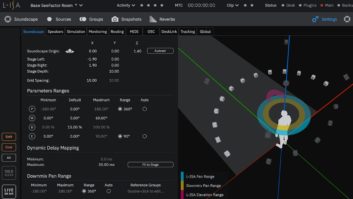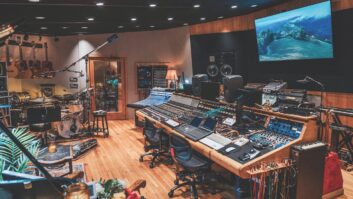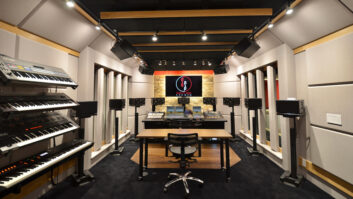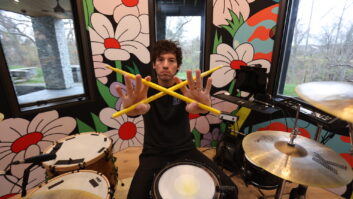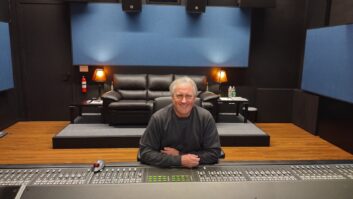HIGH CEILING, WALLS OF GLASS
On the surface, four walls of glass, coupled with Gordon’s affinity for symmetry, would seem to be an acoustician’s nightmare. Storyk and Larregina didn’t see it that way. “Once everybody was happy with the orientation and the size of the rooms, we started to really investigate what it meant to have parallel glass at either side, and to look very closely at all the reflections that were going to be happening from pretty much every single area in the studio,” Larregina says. “Working as both control room and live tracking room made this analysis considerably more complex. You’ll have an issue if you’re not looking at every single angle, and so that’s what we did.
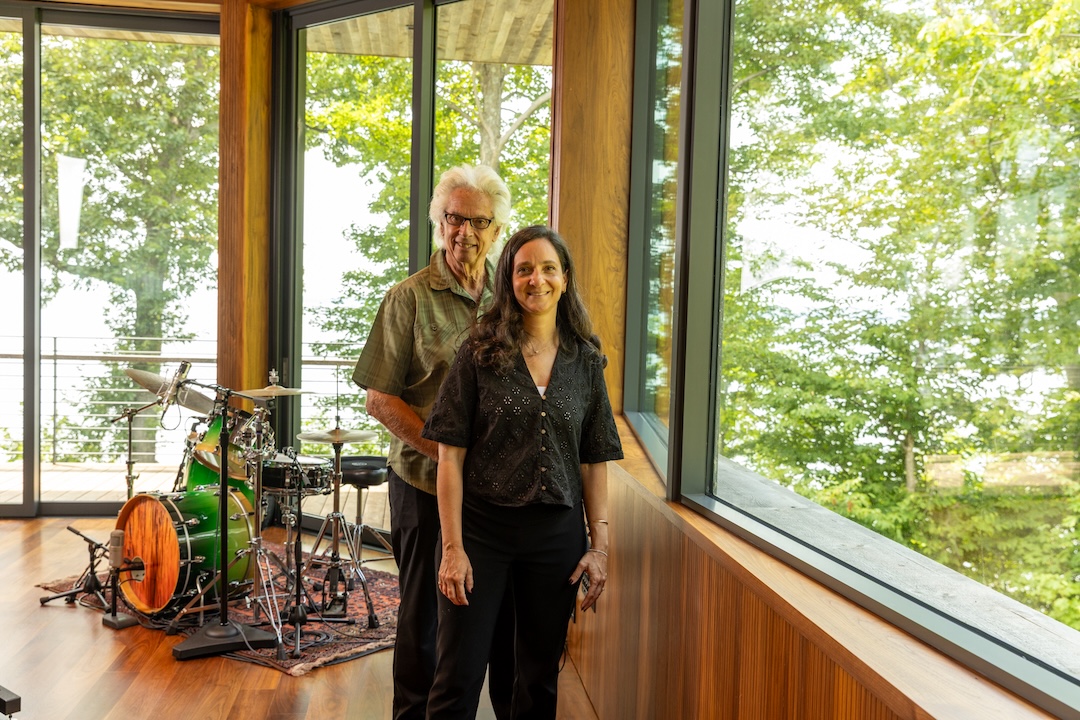
“After we determine the angle of the side glass, now we have a space under the wall,” she continues. “We could use that for either sound trapping, low-frequency absorption, broadband absorption and of course high-frequency diffusion, depending on what was required. We then customized treatments above and below the window to help, because pretty much everything was wood and glass!
“There’s actually six different glass thicknesses—three-quarter-inch, five-eighths, et cetera. We’re using thick laminated glass for isolation purposes, because, for instance, the window between the control room and the live room has only two panes of glass. The key is to match the STC rating of the partition to that of the glass assembly. Also, you want different thicknesses between the glasses because if both thicknesses are the same, the same frequencies will resonate disproportionally.”
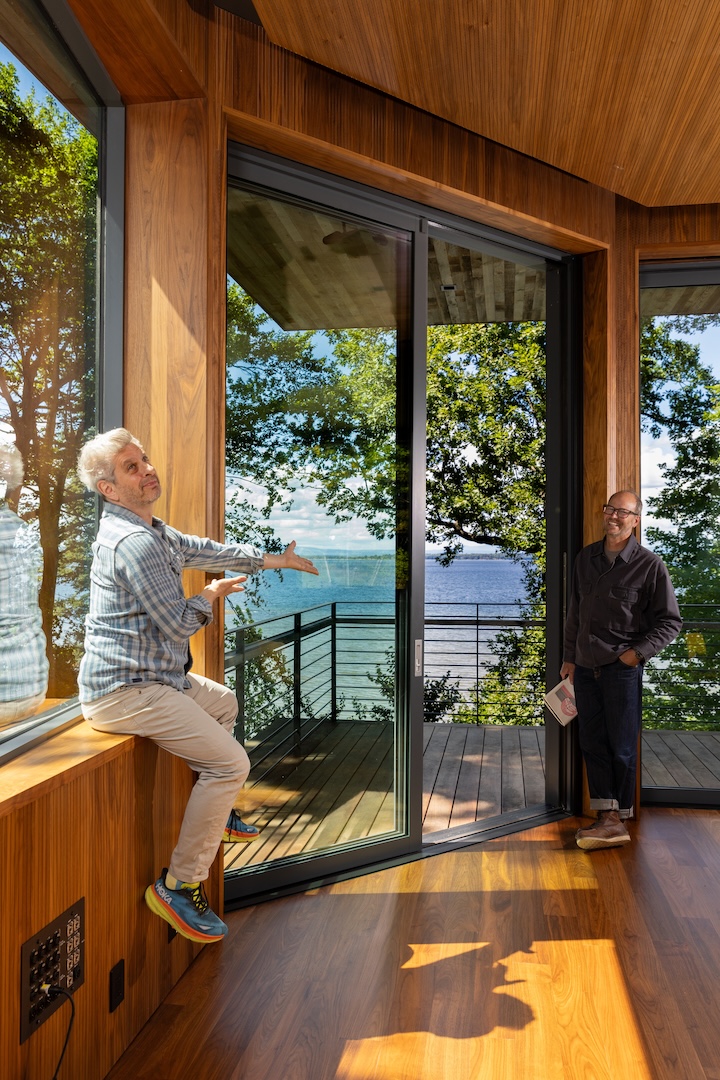
Nearly all non-glass surfaces are covered with microperf or slotted material created from wood, in fitting with WSDG’s move toward using resonators rather than fabric with insulation packed behind it.
“We don’t like to use the word ‘trap’ anymore,” Storyk notes. “It’s old-school, but it was easy and everybody understood it. Relatively inexpensive to install, but it requires maintenance and it doesn’t give you specific frequencies that you could absorb, whereas resonators, either slat resonators or perforated-hole resonators, are much more precise because we can tune them with extreme accuracy. The easiest way to make a resonator is out of wood—an assembly with holes or slats, in a number of different sizes, different thicknesses and different depths away from a wall.”
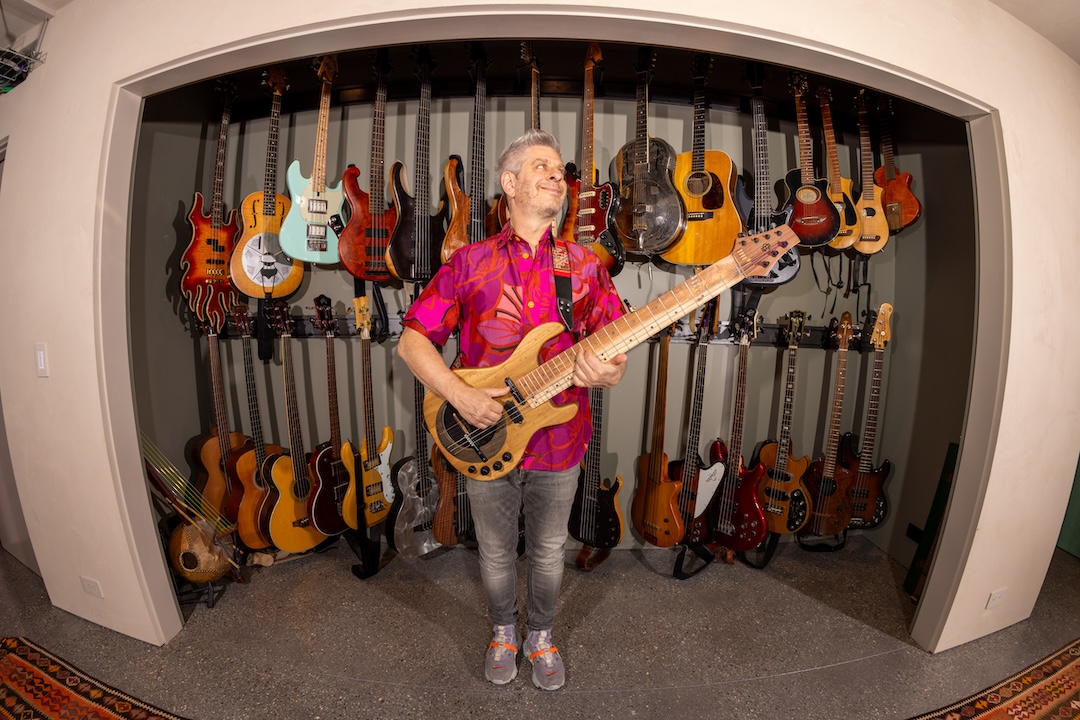
The ceiling, meanwhile, proved high enough to become an asset for the acoustic design of the room. “The ceiling itself is two ceilings,” Larregina explains. “The first is for isolation from, say, big thunderstorms. That’s the roof, with insulation and whatnot. Then we put two layers of sheetrock under the joists for increased mass—a little more isolation. Then there’s the interior, when you’re inside the room, where we have the final acoustic treatment that’s about 11 inches off the sheetrock ceiling.”

“The ceiling is doing most of the acoustic work,” Storyk adds. “A lot of what looks kind of like ordinary wood paneling is really perforated and/or slotted in a variety of ways. Flashback 55 years to Electric Lady Studios, my very first studio design. The magic of Electric Lady’s Studio A is not the river underneath. It’s not the Jimi Hendrix vibe. The magic in that room is the ceiling. Acoustically, that’s what’s working, giving that room its tight, low-frequency bass sound, which is why rock musicians have made magic in that room. Many years later, I realized I had created a large ceiling membrane absorber, using lightweight plaster, with a little help from my lifetime pal, Eddie Kramer. I just didn’t realize I was doing it in 1969. I was 22 years old, what did I know?” [Laughs]

Due to the pandemic, the making of Megaplum turned into a roughly five-year project, but now that he’s got in the swing of driving his golf cart down from the main house, accompanied by Flash, the studio cat, Gordon seems ready to rock. And to create.

“One of my big goals with creating this place was to switch personalities from the person with the list of goals and lyric ideas to ‘these are my music ideas,’” he says. “Let’s make it a little less on the list side of things. I want to come here and experiment. I want to take off the organizer cap. We have so many cool instruments that are either entirely acoustic or entirely electronic or halfway in the middle, and some are software. Let’s use them all, and let’s get creative. Nature is a great stimulator, a great inspiration.”
